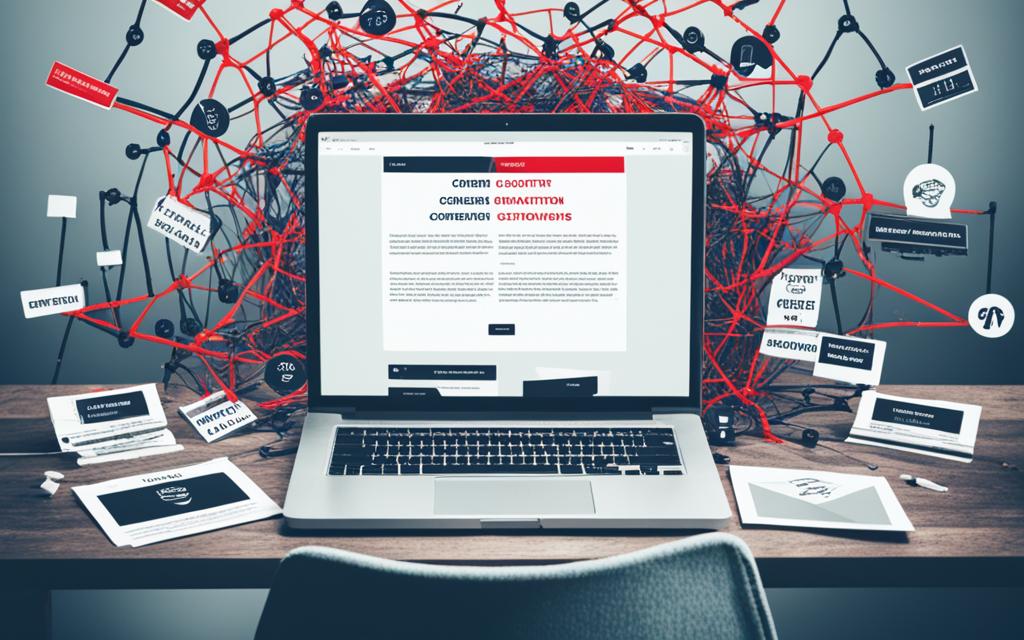In times of crisis, maintaining transparency is crucial for effectively managing the situation and building trust with stakeholders. This section will delve into the significance of transparency in crisis management and its long-term impact on your reputation.
Transparency plays a vital role in crisis management as it allows organizations to demonstrate their commitment to open and honest communication. By being transparent, you show your stakeholders that you value their trust and are willing to provide them with the information they need to make informed decisions.
Transparency in crisis management refers to being open, honest, and forthcoming in all communication channels. It involves sharing accurate and timely information about the crisis, including the causes, potential impacts, and steps taken to mitigate the situation. By being transparent, you can establish yourself as a reliable source of information and help stakeholders understand the severity of the crisis.
One of the key benefits of transparency in crisis management is the ability to build trust. When organizations are transparent, stakeholders are more likely to trust their actions and decisions. Transparency creates an environment of openness and accountability, where stakeholders feel valued and involved in the decision-making process.
Communicating honestly with stakeholders is an essential aspect of transparent crisis management. By acknowledging the crisis, discussing the potential risks and impacts, and sharing regular updates, you can assure stakeholders that you are actively addressing the situation. Honest communication helps alleviate fears and uncertainties, and allows stakeholders to make informed decisions.
Case studies of transparent crisis management serve as valuable examples of how organizations successfully navigate through challenging times. These real-life examples highlight the positive impact of transparency on stakeholder relationships, reputation management, and overall crisis response. By studying these cases, you can gain insights into best practices and learn from the experiences of others.
Utilizing tools and best practices for transparent communication is crucial in crisis management. From establishing dedicated communication channels, such as a crisis hotline or website, to leveraging social media platforms for real-time updates, organizations can ensure that information is accessible and readily available to stakeholders. Employing these tools and practices helps promote transparency and facilitates effective crisis communication.
While transparency is essential in crisis management, it is not without its challenges. Overcoming obstacles such as legal restrictions, conflicting stakeholder expectations, and managing sensitive information can be demanding. However, by proactively addressing these challenges and finding appropriate solutions, organizations can maintain transparency and effectively manage the crisis.
The long-term impact of transparency on reputation should not be underestimated. Organizations that prioritize transparency during a crisis are often perceived as trustworthy and reliable, even after the crisis is resolved. By consistently demonstrating transparency, organizations can protect and enhance their reputation, ensuring long-term success.
To maintain transparency in crisis management, consider the following tips:
- Be proactive in communicating information.
- Provide regular updates to stakeholders.
- Address rumors and misinformation promptly.
- Acknowledge mistakes and take responsibility.
- Listen to stakeholder concerns and feedback.
- Ensure consistency in messaging across all communication channels.
In conclusion, transparency is a critical component of effective crisis management. By being open, honest, and transparent in your communication, you can build trust, protect your reputation, and effectively navigate through challenging times. Embracing transparency is not only essential during a crisis but also in building strong stakeholder relationships in the long run.
Defining Transparency in Crisis Management
Before we delve into the significance of transparency in crisis management, let’s start by understanding what it entails. Transparency in crisis management refers to the open and honest communication practices organizations adopt during times of crisis. It goes beyond regular communication strategies and emphasizes a commitment to providing accurate and timely information to stakeholders and the public.
In crisis management, transparency involves:
- Sharing crucial details about the crisis situation
- Providing updates on the progress of managing the crisis
- Being forthcoming about any potential risks or challenges
- Engaging in two-way communication with stakeholders to address concerns and answer questions
By embracing transparency in crisis management, organizations demonstrate their commitment to accountability, ethical behavior, and building trust with stakeholders.
Why is Transparency Important in Crisis Management?
Transparency plays a fundamental role in crisis management for several reasons:
- Building trust: Open communication fosters trust with stakeholders, reassuring them that the organization is acting in their best interests.
- Maintaining credibility: By providing accurate and honest information, organizations can preserve their credibility, even in challenging situations.
- Minimizing speculation: Transparent communication helps to minimize rumors and speculation by sharing verified facts and updates.
- Reducing reputational damage: Being transparent allows organizations to control the narrative surrounding the crisis and mitigate potential reputational damage.
- Empowering stakeholders: Providing information empowers stakeholders to make informed decisions and take appropriate actions.
Transparency in crisis management serves as a foundation for effective crisis response and can significantly impact an organization’s ability to navigate through challenging times successfully.
Key Components of Transparent Communication
Transparent communication during a crisis comprises several key components:
1. Timeliness: Providing updates and information in a timely manner to keep stakeholders informed and engaged.
2. Completeness: Sharing comprehensive information to address concerns and ensure stakeholders have a clear understanding of the situation.
3. Accuracy: Delivering accurate and verified information to maintain credibility and avoid spreading misinformation.
4. Accessibility: Making information readily accessible through various channels to reach a wider audience and accommodate diverse stakeholder needs.
5. Consistency: Maintaining consistent messaging across all communication platforms to avoid confusion or contradicting information.
Next, we will explore the benefits that transparency brings to crisis management.
Benefits of Being Transparent in Crisis Management
Being transparent during a crisis offers numerous advantages. When facing challenging situations, it is crucial for organizations to prioritize transparency in their crisis management strategies. By embracing transparency, companies can establish a foundation of trust and credibility, which is essential for navigating through difficult times.
Increased Credibility: Transparency in crisis management allows organizations to gain credibility among stakeholders, including customers, employees, investors, and the general public. By openly sharing information about the crisis, its causes, and the steps being taken to resolve it, companies demonstrate a commitment to honesty and integrity. This transparency reassures stakeholders that the organization is actively addressing the crisis and working towards a resolution.
Enhanced Reputation: Transparency in crisis management can greatly impact an organization’s reputation. When companies are open and honest about their actions, decisions, and measures taken during a crisis, they build a positive reputation for being trustworthy and accountable. This reputation can have long-term benefits, as stakeholders are more likely to view the organization favorably and continue to support it even after the crisis has passed.
Strengthened Relationships with Stakeholders: Transparency fosters stronger relationships between organizations and their stakeholders. When companies are transparent about a crisis, stakeholders feel included, informed, and valued. They appreciate having access to accurate and timely information, which enables them to make informed decisions and understand the organization’s perspective. This transparency builds trust and loyalty among stakeholders, leading to stronger relationships in the long run.
By embracing transparency in crisis management, organizations can reap these benefits and effectively navigate through challenging times. The next section will delve into the importance of honest communication with stakeholders during a crisis and how it contributes to transparency in crisis management.
Communicating Honestly with Stakeholders
The success of crisis management heavily relies on effective communication with stakeholders. During a crisis, it is crucial to maintain open and honest dialogue with those who have a vested interest in the organization. This includes stakeholders such as employees, customers, investors, and the public. By communicating honestly, you can build trust, mitigate potential damage, and ensure a smoother recovery process.
When communicating with stakeholders during a crisis, transparency is key. It is essential to provide accurate and up-to-date information about the situation, acknowledging the severity of the crisis without downplaying the impact. By being honest about the challenges you are facing, you demonstrate credibility and show that you are taking the situation seriously.
While it may be tempting to withhold certain information or sugarcoat the truth, doing so can have detrimental effects on your relationship with stakeholders. In times of crisis, people value honest communication more than ever. By keeping stakeholders informed about developments, risks, and potential solutions, you can better manage expectations and foster a sense of shared responsibility.
“Transparency is not the same as giving away every single piece of information, but rather sharing the relevant information that stakeholders need to know.”
Furthermore, when communicating honestly with stakeholders, it is essential to address their concerns and provide clear guidance. Acknowledge their fears and uncertainties, and offer reassurance whenever possible. By demonstrating empathy and actively listening to their needs, you can build stronger relationships and garner support during challenging times.
Moreover, take advantage of multiple communication channels to reach your stakeholders effectively. Utilize email, social media, press releases, and other platforms to ensure your messages are widely accessible. Tailor your communication approach to different stakeholder groups, considering their preferences and needs.
By communicating honestly with stakeholders, you can foster trust, demonstrate accountability, and maintain a positive reputation even in the face of a crisis. Remember that honest and open dialogue goes a long way in building resilience and ensuring long-term sustainability for your organization.
Building Trust During a Crisis: Case Studies of Transparent Crisis Management
Real-world examples can provide valuable insights into the power of transparent crisis management and its role in building trust. By examining case studies of organizations that have effectively navigated crises with transparency, we can uncover key lessons and practices that can be applied to various industries and situations.
One such case study is Johnson & Johnson’s response to the Tylenol crisis in 1982. When several individuals died after consuming tainted Tylenol capsules, the company prioritized public safety and transparency. They promptly recalled millions of bottles of Tylenol, openly communicated about the issue, and worked closely with law enforcement agencies to investigate the tampering. Johnson & Johnson’s transparent crisis management approach not only helped protect public health but also maintained trust in their brand, ultimately leading to a swift recovery.
Another notable example is Airbnb’s response to the “Nightmare at 35 Chestnut Street.” In 2011, a host’s property was vandalized by guests, resulting in significant damage. Airbnb took immediate action, compensating the host for the damages, establishing a 24/7 customer support hotline, and implementing a $1 million host guarantee. Their transparent crisis management and commitment to resolving issues directly helped rebuild trust among hosts and guests, solidifying Airbnb’s position as a trusted platform for short-term rentals.
These case studies highlight the importance of transparency in crisis management. Building trust during a crisis requires open and honest communication, swift action, and a genuine commitment to addressing the situation.
Transparent crisis management not only helps organizations navigate the immediate impact of a crisis but also has long-term benefits. By proactively addressing concerns, publicly acknowledging mistakes, and actively involving stakeholders in the resolution process, organizations can foster a culture of trust and resilience.
Lessons Learned from Case Studies:
- Timely and open communication is crucial during a crisis.
- Taking responsibility and demonstrating accountability builds trust.
- Providing tangible solutions and compensations helps restore faith.
- Involving stakeholders in decision-making fosters trust and transparency.
- Learning from past experiences and implementing improvements enhances crisis management strategies.
Through these case studies, we can see that transparent crisis management is not only essential for rebuilding trust but is also a key element in effective reputation management. Organizations that prioritize transparency and honesty during times of crisis are more likely to emerge stronger and maintain long-term relationships with their stakeholders.
| Case Study | Organization | Key Takeaways |
|---|---|---|
| Tylenol Crisis | Johnson & Johnson | Prioritize public safety, open communication, swift action. |
| Nightmare at 35 Chestnut Street | Airbnb | Compensate affected parties, establish reliable support systems. |
Tools and Best Practices for Transparent Communication
Implementing transparent communication practices is crucial in crisis management. To effectively maintain transparency and sustain positive stakeholder relationships, utilizing appropriate tools and following best practices is essential.
Communication Tools
There are several tools available that can facilitate transparent communication during a crisis. These tools enable real-time updates, prompt dissemination of information, and seamless interaction with stakeholders. Some of the popular tools include:
- Email and messaging platforms: Utilize email and messaging platforms to send regular updates and engage in two-way communication with stakeholders.
- Social media management tools: Social media platforms can serve as powerful channels to share information and address concerns. Using tools like Hootsuite or Sprout Social can help manage multiple platforms efficiently.
- Video conferencing tools: Conducting virtual meetings, press conferences, and Q&A sessions through video conferencing platforms like Zoom or Microsoft Teams ensures direct and transparent communication.
- Collaboration and project management tools: Platforms like Slack or Trello enable seamless collaboration and knowledge sharing among team members, ensuring transparency in decision-making and progress updates.
Best Practices for Transparent Communication
Adhering to best practices is vital for establishing and maintaining transparent communication during a crisis. Some key best practices to consider include:
- Timely and accurate information: Provide stakeholders with prompt updates and ensure the accuracy of the information shared. Transparency relies on delivering reliable facts.
- Open and honest communication: Foster an environment of open and honest communication. Address concerns, acknowledge mistakes, and provide realistic solutions to maintain trust and transparency.
- Engage in active listening: Actively listen to the feedback and concerns of stakeholders. Demonstrate empathy and respond genuinely to their needs, demonstrating your commitment to transparent communication.
- Transparency in decision-making: Involve stakeholders in the decision-making process whenever possible. Sharing insights into your decision-making criteria and involving key stakeholders fosters transparency and inclusivity.
- Consistent and proactive communication: Regularly provide updates to stakeholders, even if there are no significant developments. Proactive communication demonstrates transparency and helps manage expectations.
By utilizing these tools and implementing best practices, organizations can effectively navigate crisis management with transparency, fostering trust and maintaining strong relationships with stakeholders.
Overcoming Challenges in Transparency during Crisis Management
Transparency in crisis management is crucial for maintaining trust and credibility. However, it is not without its challenges. To ensure that transparency remains a cornerstone of your crisis management approach, it is essential to address these obstacles head-on and develop strategies to overcome them.
Overcoming Challenges:
- Lack of Information: During a crisis, there may be instances where information is limited or uncertain. It is important to acknowledge this and communicate openly about the ongoing efforts to gather and verify information. Keeping stakeholders informed, even when details are scarce, can help maintain trust.
- Miscommunication: Effective communication is key in crisis management. However, miscommunication can occur, leading to confusion and mistrust. To overcome this challenge, establish clear channels of communication, provide consistent updates, and ensure messages are delivered accurately to avoid misunderstandings.
- Negative Public Perception: Transparency can sometimes be met with skepticism, especially if there have been past instances of dishonesty or lack of transparency. To overcome this challenge, be proactive in addressing concerns and demonstrating a commitment to transparency. Engage with stakeholders, listen to their feedback, and take corrective actions when necessary.
- Legal and Privacy Constraints: In some cases, legal and privacy considerations may restrict the level of transparency that can be achieved. It is crucial to navigate these constraints while still providing relevant and meaningful information. Consult legal experts to ensure compliance while maintaining transparency to the extent possible.
- Managing Stakeholder Expectations: Stakeholders may have different expectations regarding the level of transparency during a crisis. It is important to manage these expectations by setting realistic boundaries and explaining the rationale behind transparency decisions. Regularly assess and adjust the communication strategy based on stakeholder feedback and changing circumstances.
By proactively addressing these challenges, organizations can overcome obstacles and maintain transparency in crisis management. Transparency builds trust, strengthens relationships with stakeholders, and enhances overall crisis response and recovery efforts.
The Long-Term Impact of Transparency on Reputation
Transparency is not only crucial during a crisis but also has a long-term impact on an organization’s reputation. The way you handle a crisis can either strengthen or weaken the trust that stakeholders have in your brand. By prioritizing transparency throughout the crisis management process, you can rebuild trust, mitigate damage, and safeguard your reputation even after the crisis has passed.
When an organization is transparent during a crisis, it demonstrates accountability and a commitment to addressing the situation honestly. This level of openness fosters a sense of trust among stakeholders, as they perceive the organization as being genuine and sincere in its efforts to resolve the crisis.
The long-term impact of transparency goes beyond crisis management itself. It extends to the perception of the organization as a whole. Maintaining transparency consistently builds a reputation of trustworthiness, reliability, and ethical behavior, which can positively influence how your brand is perceived in the market.
Moreover, transparency helps to alleviate concerns over hidden agendas or ulterior motives, assuring stakeholders that their interests are being prioritized. This reassurance can lead to stronger relationships with stakeholders, fostering loyalty and advocacy.
A transparent approach to crisis management also provides opportunities for valuable learning experiences. By openly addressing mistakes and outlining corrective actions, organizations can showcase their commitment to improvement and growth. This transparency can be seen as an indicator of a forward-thinking and adaptable organization, further enhancing its reputation.
In today’s interconnected world, where information can spread rapidly through social media and online platforms, organizations cannot afford to neglect the impact of transparency on their reputation. Embracing transparency as a core value and integrating it into your crisis management strategies is essential for long-term success and resilience.
Tips for Maintaining Transparency in Crisis Management
To effectively navigate a crisis, maintaining transparency is essential. By following these tips and best practices, you can sustain transparency and build trust with stakeholders even in challenging times:
- Proactive Communication: Be proactive in your communication efforts by providing timely updates on the situation. Keep stakeholders informed about the progress, challenges, and steps taken to address the crisis.
- Regular Updates: Maintain regular communication channels to provide consistent updates to stakeholders. This can be through press releases, newsletters, or updates on your website and social media platforms.
- Prompt Response: Address any concerns, inquiries, or complaints promptly. Responding in a timely manner demonstrates your commitment to transparency and shows that you value stakeholder input.
- Be Honest and Authentic: Always communicate honestly and authentically. Admit mistakes if they occur and provide transparent explanations and solutions. This will help to maintain credibility and trust.
- Collaborate with Stakeholders: Involve stakeholders in the decision-making process whenever possible. Seek their input and engage in open dialogue to ensure transparency and foster a sense of collaboration.
- Train and Educate: Provide training and education to your team on crisis communications and the importance of transparency. Equip them with the skills and knowledge needed to effectively communicate during a crisis.
- Monitor and Address Rumors: Stay vigilant in monitoring for any rumors or misinformation circulating about the crisis. Address these promptly and provide accurate information to combat potential damage to your reputation.
- Evaluate and Learn: After the crisis has been resolved, take the time to evaluate your communication efforts. Identify areas of improvement and incorporate these learnings into your crisis management strategy for the future.
By following these tips, you can maintain transparency throughout a crisis and effectively manage the impact on your organization’s reputation.
Conclusion
In conclusion, transparency in crisis management is not only a fundamental aspect of effective crisis communication but also a vital strategy for preserving trust and reputation. By embracing transparency, communicating honestly with stakeholders, and using the right tools, organizations can navigate challenging times with integrity while fostering strong relationships with stakeholders.







